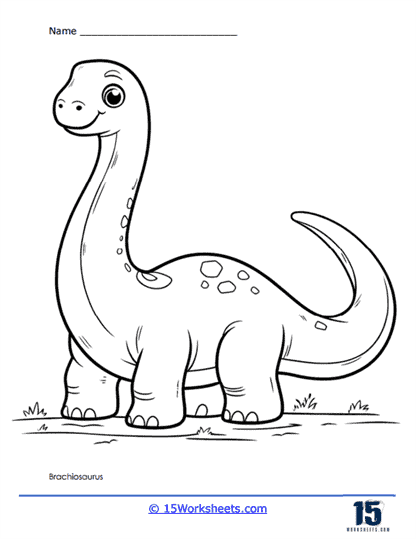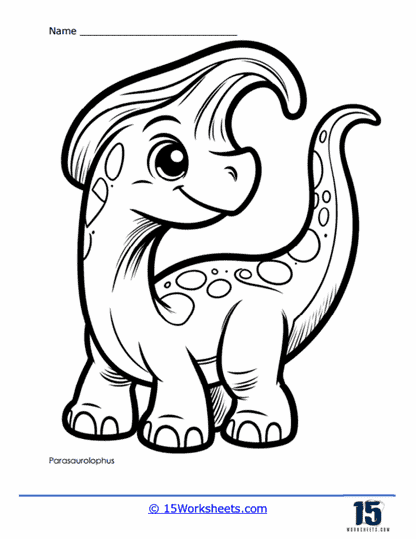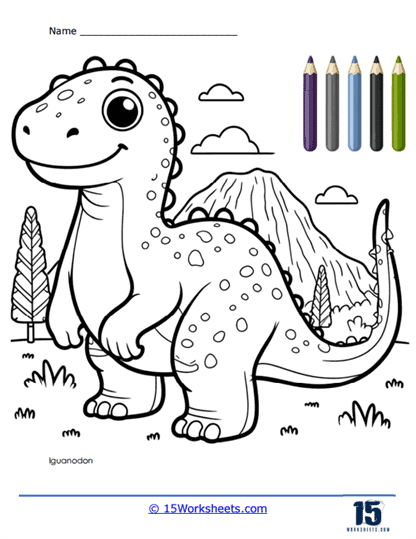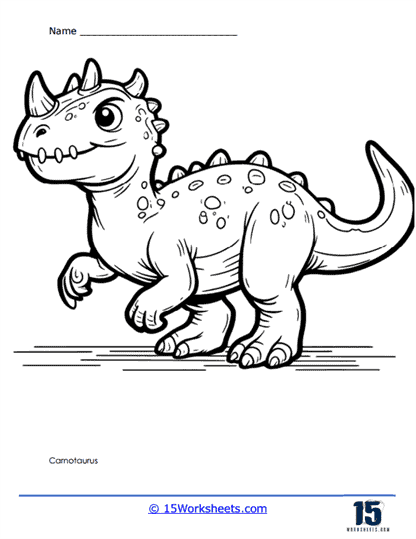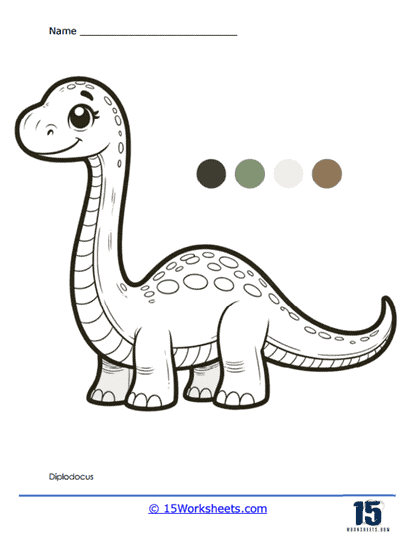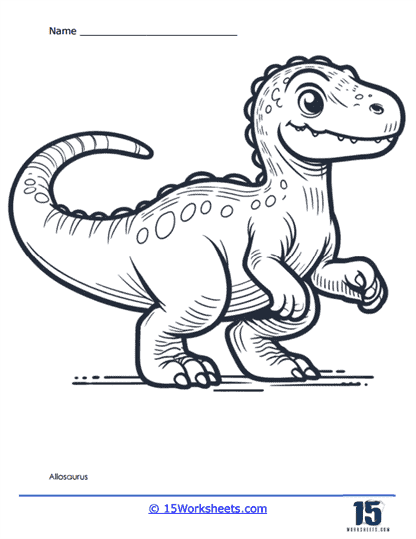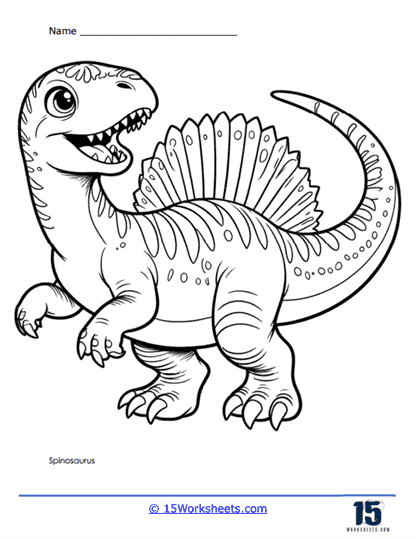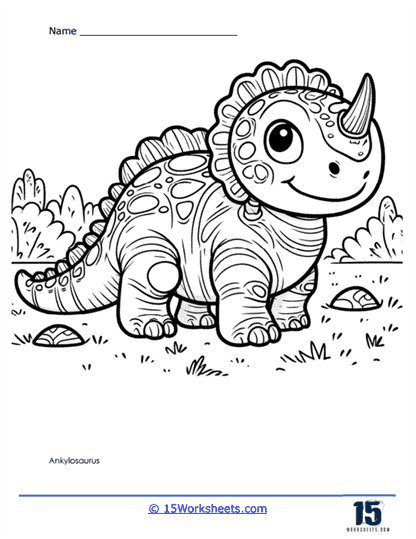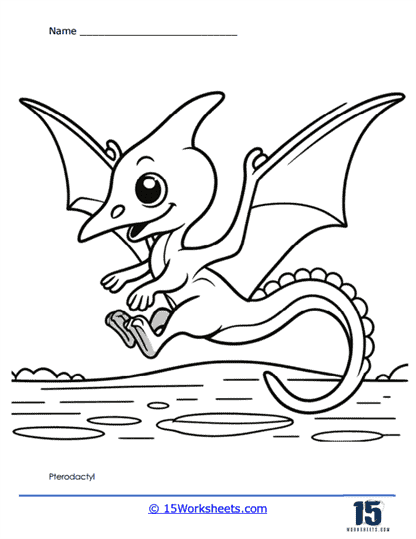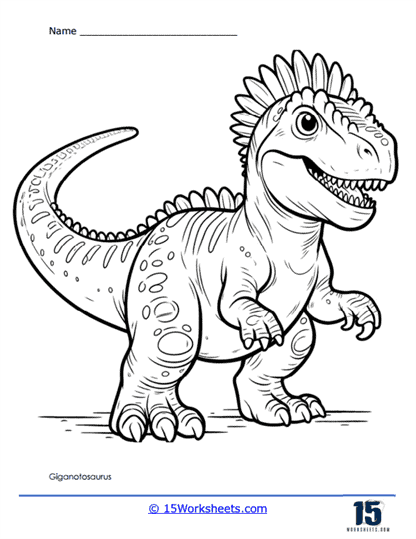Dinosaur Worksheets
About These 15 Worksheets
These coloring pages are an exciting and educational activity that captivate the imaginations of children and adults alike. These pages feature various types of dinosaurs and prehistoric scenes, offering a window into the fascinating world of these ancient creatures. Dinosaur coloring pages can range from simple outlines suited for young children to complex and detailed illustrations designed for older kids and adults. They serve as a wonderful tool for both artistic expression and learning about the different species of dinosaurs, their habitats, and the prehistoric era they lived in.
The primary focus of dinosaur coloring pages is, naturally, the dinosaurs themselves. These coloring pages typically showcase a diverse array of dinosaur species, each with its unique characteristics and features. Commonly depicted dinosaurs include the mighty Tyrannosaurus Rex, known for its massive size, powerful jaws, and sharp teeth. The T-Rex is often illustrated in dynamic poses, roaring or hunting, providing an exciting subject for colorists. Another popular dinosaur is the Triceratops, recognizable by its three horns and large frill. Triceratops coloring pages might show these herbivores grazing or defending themselves from predators. The long-necked Brachiosaurus, with its towering height and gentle demeanor, is another favorite. These dinosaurs are often depicted reaching for leaves high in the trees, emphasizing their size and herbivorous diet.
In addition to these well-known species, dinosaur coloring pages feature a variety of other dinosaurs, such as the Stegosaurus with its distinctive row of bony plates along its back, the swift and agile Velociraptor, and the heavily armored Ankylosaurus. Each of these dinosaurs provides an opportunity to explore different colors, patterns, and textures, making the coloring experience more engaging and educational.
The habitats depicted in dinosaur coloring pages are just as varied and interesting as the dinosaurs themselves. These pages often portray prehistoric landscapes, complete with lush vegetation, towering trees, and volcanic mountains. Colorists might encounter scenes of dense jungles, wide open plains, or rocky cliffs. These backgrounds provide a rich and detailed setting for the dinosaurs, adding depth and context to the illustrations. Coloring these environments helps develop an understanding of the natural world and the ecosystems that existed millions of years ago.
Water features are also common in dinosaur coloring pages. Rivers, lakes, and waterfalls can be included in the scenes, sometimes with dinosaurs like the Spinosaurus or Plesiosaurus interacting with these bodies of water. These elements add a dynamic aspect to the pages, as water can be colored in various shades of blue and green, with reflections and ripples adding complexity to the illustration. The inclusion of water also highlights the diverse habitats that dinosaurs inhabited, from forested areas to coastal regions.
Some dinosaur coloring pages incorporate whimsical and fantasy elements. For example, dinosaurs might be shown in imaginative settings, such as interacting with modern objects or engaging in human-like activities. These pages can depict dinosaurs celebrating birthdays, playing sports, or even attending school. These fantasy elements make the coloring pages more fun and creative, allowing colorists to use a broader range of colors and explore different themes.
Another interesting aspect of dinosaur coloring pages is the inclusion of other prehistoric creatures. Alongside dinosaurs, these pages might feature pterosaurs, the flying reptiles of the prehistoric world. Pterodactyls and Pteranodons can be shown soaring through the skies, adding an aerial dimension to the scenes. Marine reptiles like the Mosasaurus or Ichthyosaurus might be depicted in underwater scenes, highlighting the diversity of life that existed in prehistoric times. These additional creatures enrich the illustrations and provide more opportunities for detailed and varied coloring.
These sheets often reflect different time periods within the Mesozoic Era, the age of dinosaurs. This era is divided into three periods: the Triassic, Jurassic, and Cretaceous. Each period had its unique flora and fauna, which can be depicted in the coloring pages. Triassic scenes might feature early dinosaurs and more primitive plant life, while Jurassic and Cretaceous pages could showcase more advanced dinosaurs and diverse ecosystems. By coloring these different periods, children can learn about the evolutionary history of dinosaurs and how life on Earth changed over millions of years.
Educational themes are also prevalent in dinosaur coloring pages. Some pages might include diagrams and labels, helping children learn the names and characteristics of different dinosaurs. Others might illustrate the dinosaur’s life cycle, from hatching from eggs to growing into adults. These educational elements make the coloring activity not only fun but also informative, enhancing knowledge about paleontology and natural history.
Seasonal themes can add variety to dinosaur coloring pages. For instance, summer scenes might depict dinosaurs in bright, sunny environments with abundant vegetation. Autumn pages could show dinosaurs among falling leaves and changing colors, providing warm and rich hues to work with. Winter-themed pages, although less common, might depict dinosaurs in snowy landscapes, adding a unique twist to the prehistoric setting. These seasonal themes keep the coloring activity fresh and interesting, encouraging colorists to experiment with different palettes and techniques.
These types of sheets can also include interactive elements and puzzles. Some pages might feature mazes, connect-the-dots, or word searches related to dinosaurs. These activities add an extra layer of engagement and challenge, making the coloring pages more than just a passive activity. They stimulate critical thinking and problem-solving skills, making the learning experience more dynamic and enjoyable.
The artistic styles of dinosaur coloring pages can vary greatly, catering to different preferences and skill levels. Simple, bold outlines with large spaces to color are ideal for younger children who are just developing their coloring skills. These pages often feature cute and cartoonish dinosaurs in straightforward settings. For older kids and adults, more detailed and intricate designs can provide a satisfying challenge. These pages might include realistic depictions of dinosaurs with fine details, or elaborate patterns where dinosaurs are integrated into complex, repetitive designs. These intricate pages can be a great way to practice advanced coloring techniques and achieve a sense of accomplishment.
Traditional coloring materials such as crayons, colored pencils, and markers, dinosaur coloring pages can be enhanced with other art supplies. Glitter pens can add a sparkly touch to the scales of dinosaurs or the foliage of plants. Watercolors can create soft, blended backgrounds that bring a dreamy quality to the scene. Stickers and stamps can be used to add extra details or personalize the pages. The use of different materials can expand the creative possibilities and make the coloring activity more enjoyable.
The therapeutic benefits of coloring should not be overlooked. Coloring dinosaur pages can be a calming and meditative activity that helps reduce stress and anxiety. The focus required for coloring can serve as a form of mindfulness, allowing individuals to relax and engage in a creative flow. For children, coloring can also be a way to express emotions and develop fine motor skills. For adults, it can be a nostalgic and enjoyable pastime that offers a break from the demands of daily life.






